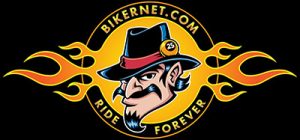
Editor’s Note: Plates, plates and more plates…Always needed but most of the time overlooked. We are on the hunt to document all the various transmission plates in the Bikernet.com Galaxy. It’s a strange search with many variables. We started with Paughco, a classic chopper company. They’ve been stamping out plates since 1969 and have a vast library of knowledge, frame configurations and tranny plates.

The most asked about tranny plate is Paughco’s 218A. This tranny plate is made to fit a 5-speed Softail tranny ‘86-’99 or into a rigid 4-speed frame. All Paughco rigid frames are made in the OEM 4-speed position.

The most common mistake that happens with this plate is when someone or a company tries to order the 218A plate to fit a 5-speed into a FL swingarm frame. The plate will actually bolt down but the 5 speed cases are larger than the 4-speeds. This means the rear of the case hits the pivot point of the swingarm and will not allow it to fit properly. Paughco offers a 5-speed FL frame, which has been stretched in the rear 2 inches and allows you to have that old style Paughco FL frame with the updated 5-speed tranny.

If a guy wants the 5-speed in his OEM FL swingarm frame without heavy mods, I always suggest going with a 5-speed in 4-speed case. This makes life a lot easier, not cheaper just easier.
All Paughco 5-speed rigid and swingarm frames with stock rear tires come with the 218A which allows you to run a 5-speed transmission and a stock width 4-speed frame.
Which brings me to the tranny plates with an offset for wide tire applications.

If your ordering a wide tire 5-speed rigid frame from Paughco, you will need to order the tranny plate (not included). When we say wide tire around here, we mean a 180mm or a 200mm tire. For the wide application you will need a 1/2 offset tranny plate which is part number 218AW. For some unknown reason we list this tranny plate as having a 7/16 offset but in actuality it is a ½-inch.

If your ordering a Paughco 5-speed rigid for a 230-250 rear tire you will need the 1 ½-inch offset plate (part # 218AX).

Here’s the latest from Paughco as of 7/13:
TRANSMISSION MOUNTING PLATES
Looking for a replacement transmission mount plate or solution to a 4-to-5-speed conversion? No problem, Paughco has a wide variety of mounting plates and adjusters that accommodate most Big Twins from Knuckleheads to late customs running 4 and 5-speed transmissions. To find the model that best fits your needs check them out at www.paughco.com or call directs to 775-246-5738.

–Jason
Paughco Inc,
Frame and Springer Specialist

